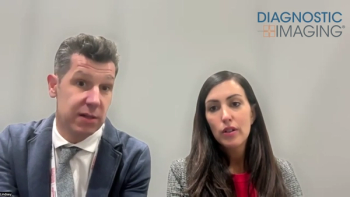
Structured and Automated Reporting Can Eliminate Thyroid Ultrasound Errors
A combination of structured reporting and an automated reporting template can bring errors with these scans down to zero.
Radiologists who use a reporting template that is fully automated and structured can potentially see their error rate with thyroid ultrasound imaging fall to zero.
Recently, a team of researchers from Duke University tested four Thyroid Imaging Reporting and Data System (TI-RADS) strategies to determine their impact on error rates. They examined templates that were free text, minimally structured, fully structured, and full structured and automated with embedded software that automatically sums TI-RADS points, correlates with nodule size, and inserts appropriate recommendations in to reports.
Based on their analysis, they found that the fully automated and structured templates overwhelmingly eliminated errors. The published their results in the
“Data from our readers showed fewer errors with an automated report compared with other template types,” said the team, led by Benjamin Wildman-Tobriner, M.D., assistant professor of radiology and director of the abdominal imaging fellowship program, “and no reader committed a single error when using the most advanced template.”
In recent years, radiology reports have evolved to contain more detail, and structured reports and disease-specific classification systems, such as TI-RADS and BI-RADS, are gradually replacing free-text paragraphs. But, the more complex the system, the more prone to errors it can be, the team stressed.
“Complicated classification schemes create problems for modern workflow because radiologists function as their own editors and proofreaders,” the team said. “With clinical volumes and time pressures increasing, overly complex reports may lead to errors in execution or reduced efficiency.”
To determine whether it was possible to improve accuracy, Wildman-Tobriner’s team had four radiologists dictate 20 ultrasounds per template type, resulting in 80 interpretations per template type, using TI-RADS. The team recorded the error rate of these mistakes made with point assignment, point addition, risk-level assignment, and recommendation. They also analyzed reporting times and surveyed the radiologist about their experiences using the templates.
Based on their evaluations, the team determined that using structured reporting and the software together brought the error rate down to zero percent. By comparison, 27.5 percent of reports with the free-text template had errors, as did 28.8 percent of reports from the minimally structured template, and 18.8 percent of reports from the fully structured template alone. Still, the frequency of each error type diminished across the four templates.
The team also identified changes in reporting time. For the less complicated templates, average reporting times ranged from 210 seconds to 240 seconds, while the average time for the automated template – which radiologists subjectively preferred – was 180 seconds.
“All of our readers subjectively preferred the automated templated, likely in part because it concentrated their experience and skills on classifying nodule features,” the team said. “Once features were determined by the radiologist, our results suggest that software could be used to generate the TI-RADS recommendations and eliminate calculation errors.”
Newsletter
Stay at the forefront of radiology with the Diagnostic Imaging newsletter, delivering the latest news, clinical insights, and imaging advancements for today’s radiologists.





























